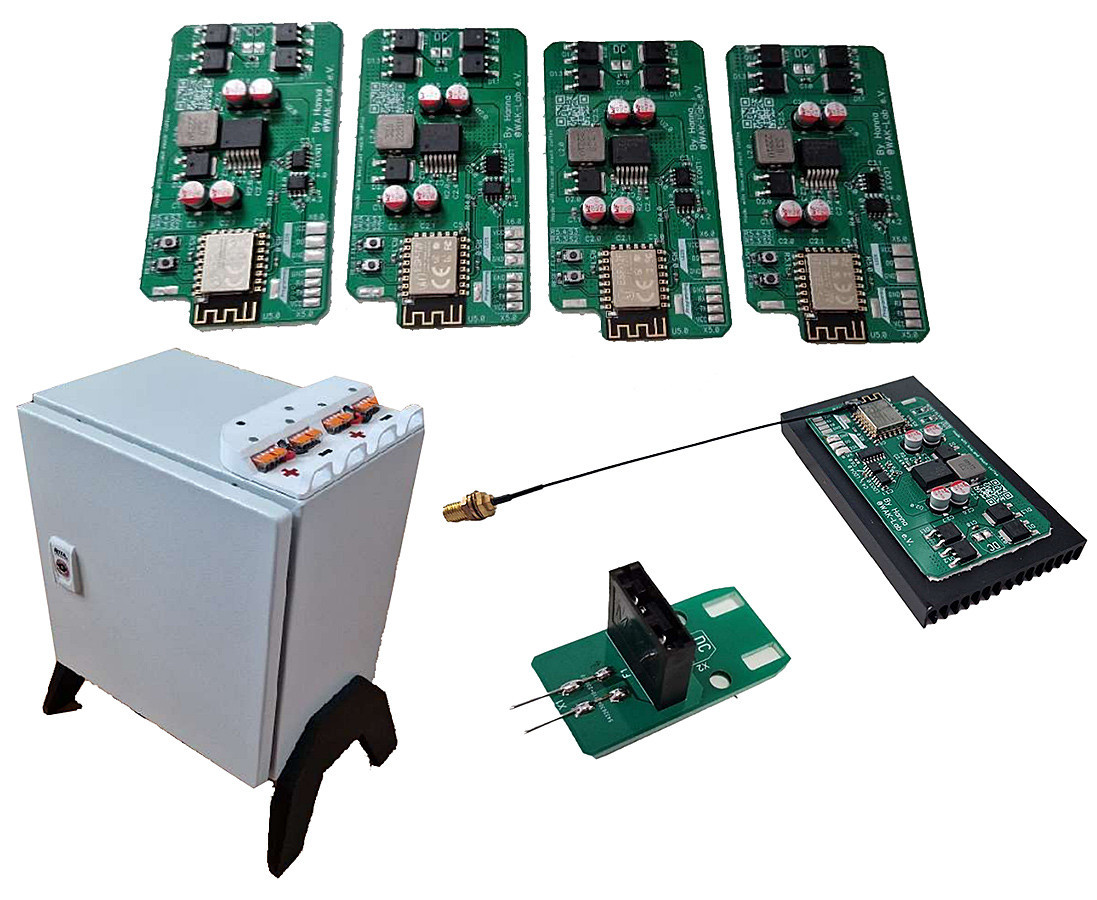'Celebrating the next generation' - this is how Christoph Bornhorn introduced his announcement text, which we printed in PLUS issue 11/2023. At the PAUL Award ceremony last December, we were able to see for ourselves how seriously the Managing Director of the FED headquarters in Berlin meant this.
In addition to the ten nominees and their companions, a number of FED members were invited, and many of them came. The Spreespeicher, an event location on the banks of the Spree not far from the Oberbaumbrücke, was a clever choice - the ambience was suitably upmarket and a 'youth-oriented' TV media event was taking place in the same building at the same time. The award ceremony largely followed its 'big brother' - the PCB Design Award. As with the latter, Bornhorn acted as moderator and warmly welcomed the young participants. They presented their design ideas to the audience themselves in video clips - some very seriously in the laboratory or electronics workshop, others very creatively, some even with a slight sense of humor and acting talent. This is where the first difference to the more 'grown-up' PCB Design Award became apparent: young people speak their own language and codes. However, there was little doubt about the individual achievements of the nominated teams and individuals. A high degree of creativity and developer enthusiasm was evident. And this is exactly what the PAUL Award aims to awaken and encourage.
Bornhorn's moderation struck exactly the right note, with a mixture of recognition, depth of detail and a twinkle in the eye. The three award winners were each asked to come forward by a member of the jury, who gave the reasons for the award. Third place went to Tim Mattern for his cleverly pragmatic MakroPad, which uses low-power eInk displays for freely programmable buttons. Second place went to Hanna Lieding for her sophisticated LED lighting system, which was used for the first time at a music festival and enables decentralized control by festival visitors via a WLAN router. The jury member Claudia Mallok emphasized the creativity of this design and described Lieding as a 'rock star of electronic design'. First place went to Peter Heynmöller for his Power Distribution Unit, which he developed as part of a team for a resource-saving hybrid vehicle. Hydrogen is converted into electricity via a fuel cell, while a power buffer can balance out power peaks and troughs to ensure efficiency is maintained.
After the award ceremony, there was an appropriate celebration. However, one thing became clear: the age structure of those present also reflected the reason why the FED is so strongly committed to this competition. The shortage of skilled workers in the electronics industry is evident, and there is obviously no inevitability for young people to follow a corresponding career path. It was therefore all the more refreshing to observe the conversations between 'FED veterans' and the young nominees, but above all among the nominees themselves. There was contact, professional exchange about the nominated projects and laughter together. Who knows what design and business ideas were born that evening?
 Hanna Lieding's sophisticated LED lighting system has already been used at a music festival
Hanna Lieding's sophisticated LED lighting system has already been used at a music festival
Actively reaching out to young people
In a table discussion with Dieter Müller, FED Chairman and company owner of the BMK Group, he once again impressively described how the association has long recognized that more needs to be done for young talent. The fascination of electronics design and production must be brought closer to young people, and the FED sees itself as having a duty to actively reach out to the younger generation. The PAUL Award is an important element in not only celebrating the next generation, but also retaining them in the long term. One success story is the first winner of the 2021 award, Paul Goldschmidt, who was accepted into the FED as a multiplier and became part of the PAUL Award jury. In an interview with PLUS (issue 12/2024), he recommended optimizing the social media presence for the upcoming award. But overall, both he and the 2023 award winners were very impressed with the external impact and implementation of the competition.
So is there still room for improvement? It would certainly have been desirable to see more young faces at the event, for example by inviting selected vocational school students, electronics students or trainees. This could certainly increase interest in the upcoming PAUL Award. And would it perhaps have made sense to follow the 'serious part' of the evening with a more youth-oriented finale, especially in view of the parallel event in the Spreespeicher? One could almost have wished to experience Hanna Lieding's lighting system 'in action' with good beats.
On the other hand, such an idea can quickly come across as pandering. The best way would surely be to involve previous participants directly - so that the PAUL Award becomes half of what it already is: appropriate appreciation of the next generation of electronics, a cult competition and a fountain of youth for an industry whose products are closer to young people than almost any other.





